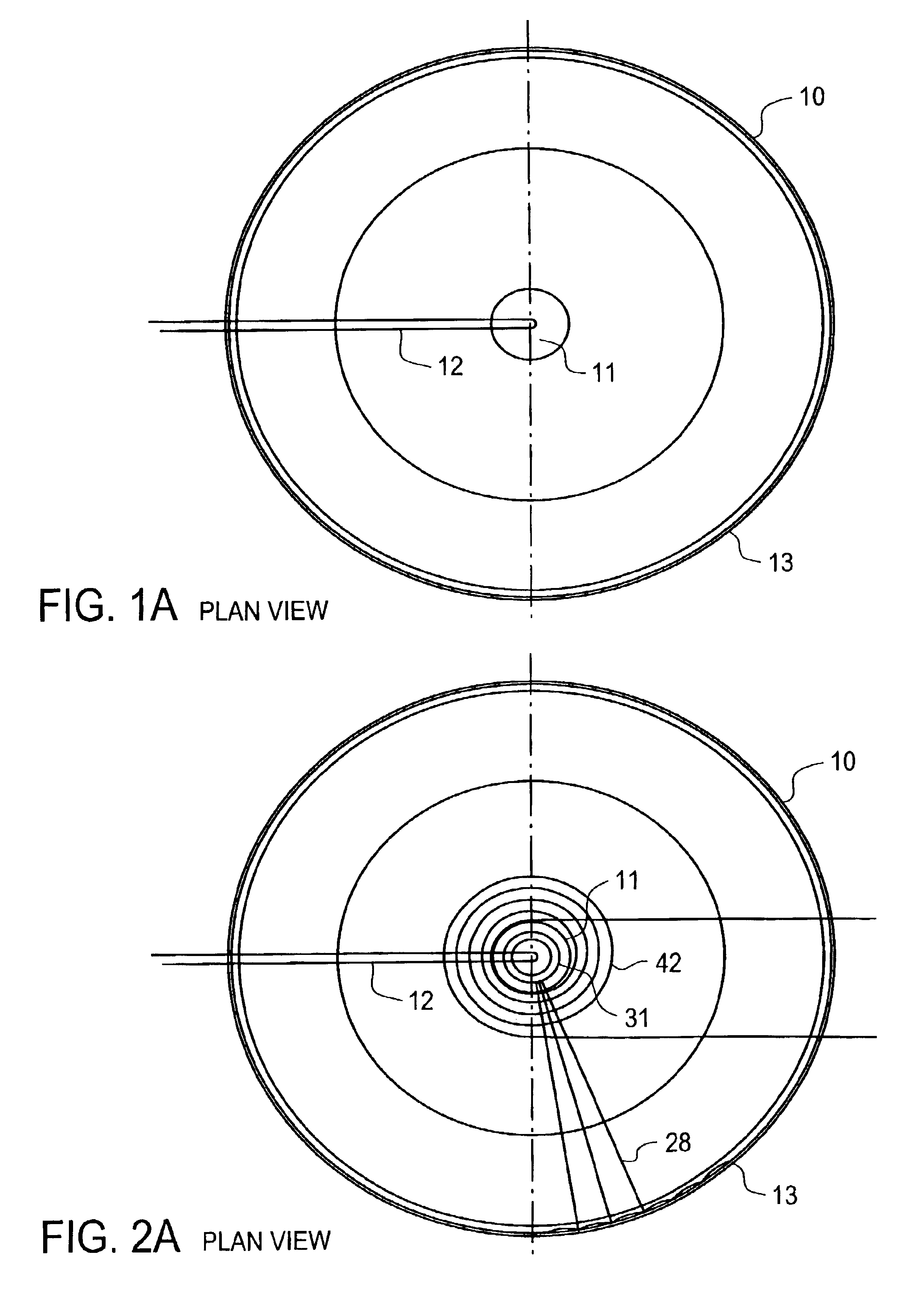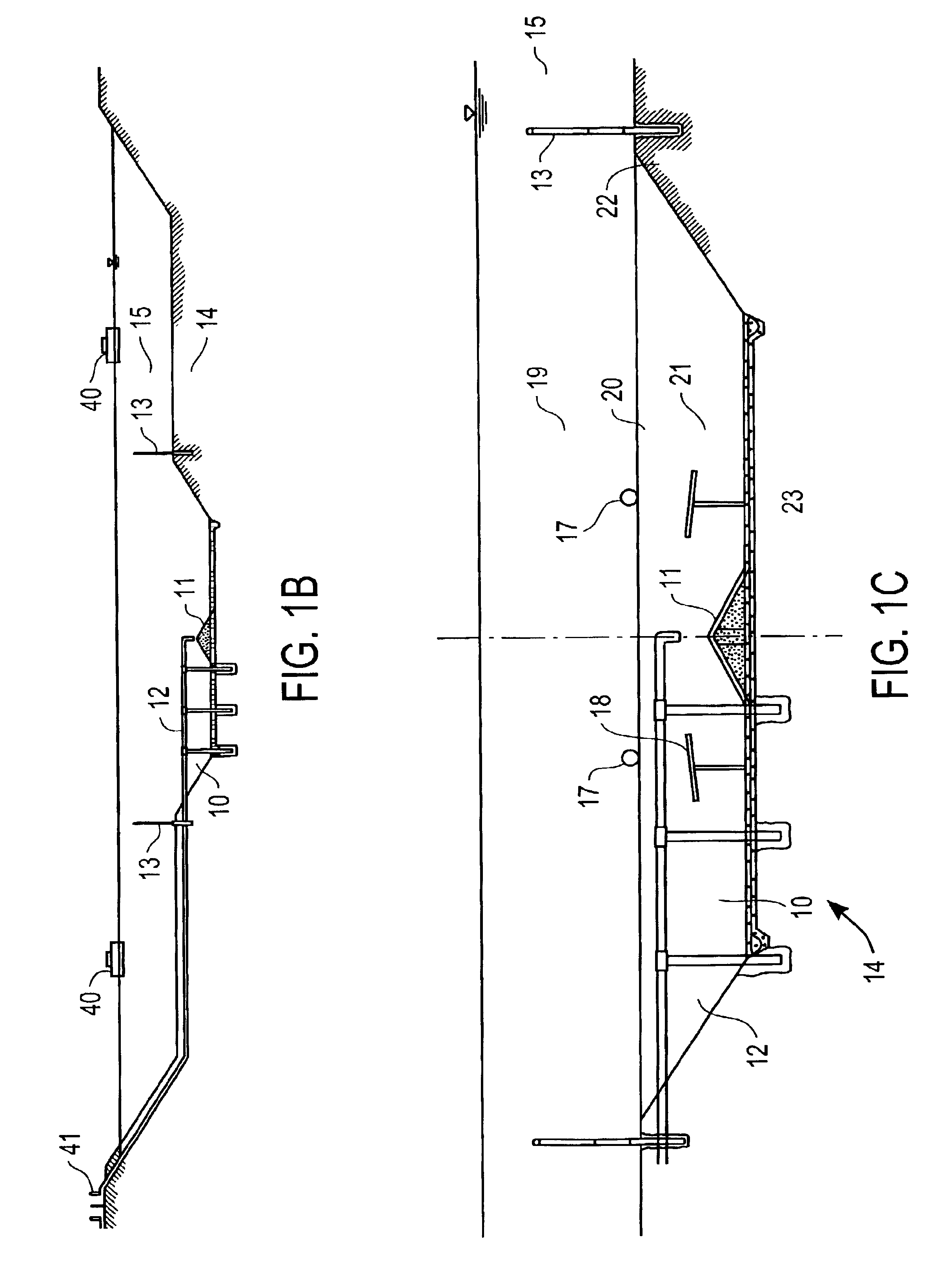Apparatus to establish and optimize sedimentation and methane fermentation in primary wastewater ponds
a technology of sedimentation and methane, which is applied in the direction of biological water/sewage treatment, liquid degasification, separation processes, etc., can solve the problems of high infectious and potentially toxic or hazardous sewage sludge, high cost of handling and disposing of sludge safely, and increase the rate of pathogenic bacteria die-o
- Summary
- Abstract
- Description
- Claims
- Application Information
AI Technical Summary
Benefits of technology
Problems solved by technology
Method used
Image
Examples
Embodiment Construction
[0011]In accordance with the invention, the drudgery, hazards, and cost of day by day handling of grit, floatables, grease, and sludge are eliminated for periods of up to 20 years.
[0012]Since burial is likely to be the ultimate method for disposal of floatables, grease, grit, and sludge, the principle of this new method is to create a combined treatment and disposal site at the point of waste introduction.
[0013]In structure, this new method is carried out in two ponds—one within the other. The larger of the two surrounds and overlays the smaller pond. It is called the outer pond. The other pond is located in the bottom of the outer pond and is called the inner pond or pit. The outer pond is designed to contain aerobic or semi-aerobic wastewater. The inner pond is designed to prevent intrusion of dissolved oxygen from the outer pond and contain semi solid slurry in the highly reduced anaerobic state needed as substrate to foster methane fermentation. The inner pond is also designed t...
PUM
| Property | Measurement | Unit |
|---|---|---|
| surface area | aaaaa | aaaaa |
| depth | aaaaa | aaaaa |
| depth | aaaaa | aaaaa |
Abstract
Description
Claims
Application Information
 Login to View More
Login to View More - R&D
- Intellectual Property
- Life Sciences
- Materials
- Tech Scout
- Unparalleled Data Quality
- Higher Quality Content
- 60% Fewer Hallucinations
Browse by: Latest US Patents, China's latest patents, Technical Efficacy Thesaurus, Application Domain, Technology Topic, Popular Technical Reports.
© 2025 PatSnap. All rights reserved.Legal|Privacy policy|Modern Slavery Act Transparency Statement|Sitemap|About US| Contact US: help@patsnap.com



